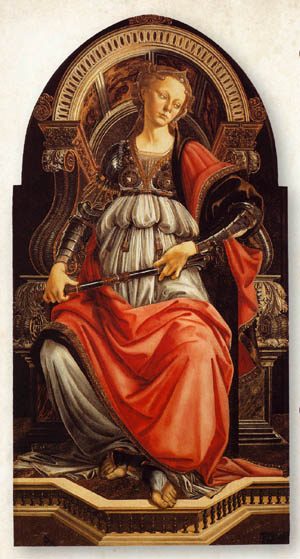 It’s that time of year. Suddenly you no longer care about the Cheerios on the floor, the workbooks begging for attention in their little pile, or how many Latin verbs your teenager can conjugate. You have reached the end of the school year, and despite how many unchecked tasks and goals may remain on your monthly planner, nature is telling you to pause and seek renewal. Every morning hums with bees rustling in your tomato patch, the sunrise comes earlier and earlier with an orange haze creeping through full, lush trees, and bunnies scatter in the dewy grass, hoping no one notices the little chunks chewed out of the lettuce. Or maybe you rise to the refreshing smell of an automatic coffeemaker and the roar of traffic underneath your window!
It’s that time of year. Suddenly you no longer care about the Cheerios on the floor, the workbooks begging for attention in their little pile, or how many Latin verbs your teenager can conjugate. You have reached the end of the school year, and despite how many unchecked tasks and goals may remain on your monthly planner, nature is telling you to pause and seek renewal. Every morning hums with bees rustling in your tomato patch, the sunrise comes earlier and earlier with an orange haze creeping through full, lush trees, and bunnies scatter in the dewy grass, hoping no one notices the little chunks chewed out of the lettuce. Or maybe you rise to the refreshing smell of an automatic coffeemaker and the roar of traffic underneath your window!
Summer has come, and it’s time to rethink your homeschool trajectory. You might be feeling exhausted from the year, overwhelmed at the range of curriculum choices for next year, perhaps even uncertain whether homeschooling is still right for your children. You’re just plain bushed, and you need some inspiration, so I am going to give you a little art lesson and tell you about a lady who has had a big impact on modern homeschooling methods. I hope this will give you some inspiration for the coming school year.
Miss Mason: Her Life
Sandro Botticelli was an Italian painter, one of the greatest artists during the Renaissance, who received his first paid commission to paint the likeness of Fortitude, one of the seven virtues, for a panel in the sunny city of Florence, Italy. It was in this marvelous city, filled to the brim with laughter, artistic Easter eggs in every corner and warm, restoring light that Charlotte Mason encountered the painting “Fortitude” while she was visiting with friends. You can just imagine Charlotte as a young girl, her lovely dark hair done in a pert bun, tattered notebook firmly clutched in both thin hands as she tried to recreate the marvelous painting in her sketchbook. You can see her tracing the thoughtful mouth of Fortitude, a grand lady draped in milky blues and earthy browns, wearing a rich crimson cloak and cradling a heavy scepter in both hands as she sits staring at something the painting deliciously refuses to reveal.
The painting that Charlotte saw in Florence and its image of feminine strength and endurance in the face of hardships was something she carried with her back to London, where she attended the first teacher training school in England, the Home and Colonial School Society. Here Charlotte began her study of educational theories and began searching for alternatives to the often dreary methodology of mass education. She was encouraged by her own tutors to take walks on the shires and observe nature, to read meaty books that went beyond French verbs or math problems and to develop good habits, not simply good grades.
Born in 1842 in Bangor, Wales, Charlotte was the daughter of a dry-salter, a merchant dealing in salt and preserved foods; her mother struggled with feeble health, and little Charlotte was orphaned around age seventeen. Charlotte moved to London to stay with friends and attended the Home and Colonial School Society. She obtained a certificate to teach and became headmistress at The Davison School, one of the first nursery-infant schools studying methods of teaching young children. Charlotte continued this determined track, studying educational methodology and teaching at a ladies’ high school, training young women to become educators, until chronic pain and illness forced her to slow down at age twenty-nine.
Charlotte found it necessary to summon her vivid memory of her encounter with Botticelli’s “Fortitude” years after she had visited Florence. Even though she seemed young and hearty to those who knew her, Charlotte had to again quit teaching after a short respite proved to be insufficient for her healing. She took advantage of her time off, traveling around the English countryside and keeping notes in one of her ever-present journals, detailing the woods and mountains she observed, sketching them in her journal and eventually writing enough descriptions to amass a geography book called The Forty Shires, which she published in 1880.
Charlotte knew God was watching out for her even in her time of illness for the profits of her geography book were so great that she was able to move permanently to London. Once situated, she began lecturing to local parents interested in teaching their children at home. Her venture into the public arena came about when her vicar approached her about donating to a new parish. Since she was shy of the necessary funds for a donation, Charlotte offered to give a series of lectures on education instead, basing them off what she had learned during her years in teacher training school. Charlotte developed connections with the parents and became fast friends with their children through her series of expository lectures, which she would later compile to form Home Education, the first of her popular—and since republished—books on homeschooling, which you, yourself, may have read.
Seeing the keen interest her attendees had for her lectures and new methods of homeschooling, Charlotte formed the Parents’ Educational Union which took off in popularity and reached a continually widening audience of parents wishing to homeschool their children. In 1892, at age fifty, Charlotte opened the House of Education in Springfield, Ambleside, a training college for women seeking to teach just as she, herself, had done as a young woman. Charlotte continued to work at the House of Education and correspond with parents until her death in 1923, just after celebrating her eighty-first birthday.
Charlotte lived a full life, touching those around her and bringing new methods into her classroom, which was not limited to four walls and a chalkboard but stretched to rivers and woods, shires and valleys, muddy pools and mossy banks. Despite an ongoing struggle with chronic pain and the recognition she was often denied because she was an unmarried female educator, Charlotte kept the image of Fortitude in her mind. She wrote in her personal journal that she knew God was caring for her and that He would have her carry on with fortitude in the face of pain or incredulity.
The Three Pillars of Charlotte Mason Education
The method of education that Charlotte promoted is constructed around three convictions which she lays out in her series of homeschooling books: education is an atmosphere, a discipline and a life. These tenets summarize her philosophy not just about education but about the importance of character in a child which must be established at an early age to continue into adulthood.
By atmosphere, Charlotte means that a child must be surrounded by an atmosphere and given resources to fuel his intellectual growth and encourage his curiosity. Charlotte was impatient with education’s usual practice of using rote memorization to recall facts and figures, and she disparaged books of poor quality, berating them as twaddle, preferring instead good books that taught character and truth, the very things her other areas of education would be reinforcing. Hallmarks of an atmosphere of education include nature walks where a child could observe God’s creation firsthand, hands-on learning allowing for mistakes and independent discovery about the particulars of science or mathematics and a learning experience expanding beyond the child’s penknife-marked desk.
Charlotte’s second pillar, discipline, refers to her strong belief in the development of good habits and character qualities, even in young children. Whenever she was given care of children, she made sure that they had regular meals, healthy exercise every day, a consistent bedtime and hours of study balanced with hours of play. Charlotte was adamant that good habits, politeness, honesty and kindness to others would carry a child far, and if the literature read during school time taught these same lessons, so much the better!
The third and final pillar, life, is the concept that all of life is an education with boundless opportunities to be taught from a wellspring of wisdom found in every area of life but especially nature, conversation and the arts. If given the atmosphere to explore these things and the discipline to realize the importance of attentiveness to details and a healthy craving to learn more, a child will rise to the occasion. Their inherent desire to gain knowledge and relate to their world will fashion their entire education into a lifestyle that seems as natural as getting out of bed in the morning, breathing in a good smell or enjoying the sweet words of a well-written book.
Back to Your Life
You might find yourself reading this, however, and thinking morosely that Charlotte’s pillars might have been nice things to write down, good in theory, but extremely hard and even impossible in practice. How does one implement her pillars in the face of unmotivated kids, a messy house that isn’t an encouraging place to be, much less an educational environment, or demanding schedules that require your attention to be divided among a dozen tasks at once?
First, remember, it’s summer now—take a deep breath and be gracious with yourself! You have reached the end of the school year, and it’s time to put away the planner, collect your thoughts and pray about direction. The beauty found in Charlotte’s methodology is that it’s actually not so difficult to integrate into a normal school day. It can work just as well with one child as it can with twelve, with a student who is raring to go every morning as well as a student who would rather be off doing his own thing. As for the messy house, put it in perspective and relax because in the grand scheme, it won’t make a difference to a child who looks back on their homeschool experience and fondly thinks about the effort and attention their parents put into educating them, not frantically picking up everything that falls on the floor. The time it takes to sit down and read a book aloud together, find Hungary on a map together instead of leaving the child to fend for himself or make hardtack after studying the Revolutionary War is indeed time well-spent, and the hands-on approach to learning will draw in reluctant students.
The purpose of a Charlotte Mason education is not to have the perfect school day, have a host of fun projects each week or even to have fun every moment while learning but rather to challenge the sleeping forces of curiosity, intellect and responsiveness in a child to do great things. Ultimately, all those cooking projects, nature walks with journals in hand or afternoons laughing over pronouncing French verbs aloud together are meant to bring honor to God, the Creator of education, nature and curiosity.
You might find that distractions too often get in your way: you can’t think of a single hands-on project to do, your garden is wilting under the frying summer sun, bad news and scandalous stories cry for attention from headlines and pulpits. When you start feeling this overwhelming sense of distraction, dissension and perhaps even failure, remember the dark-haired girl in Florence staring with an open, wondering mouth, her eyes transfixed on “Fortitude.” Charlotte recognized the necessity of having fortitude in her own life, and unarguably it is necessary in the homeschooling experience. If you are convicted that homeschooling is your calling, that it is right for your family, then distractions and troubling news will unquestionably come your way. However, God gives fortitude to faithful servants who are willing to press on to unveil richness in education that few people are patient and determined enough to find. Cultivating fortitude does not depend on whether or not your child loves learning, whether or not you live surrounded by nature, whether or not you’re following the Charlotte Mason style of education. Fortitude is what you must have regardless of these things. It is the determination to press on and the strength God rewards to such an act of faith.

 Lindsey Narmour is a homeschool graduate and the author of several books in the Discovering Nature Series, published by Queen Homeschool Supplies. Narmour received her A.A. in liberal arts from Virginia Western Community College and is now pursuing a B.A. in English at Hollins University.
Lindsey Narmour is a homeschool graduate and the author of several books in the Discovering Nature Series, published by Queen Homeschool Supplies. Narmour received her A.A. in liberal arts from Virginia Western Community College and is now pursuing a B.A. in English at Hollins University.
